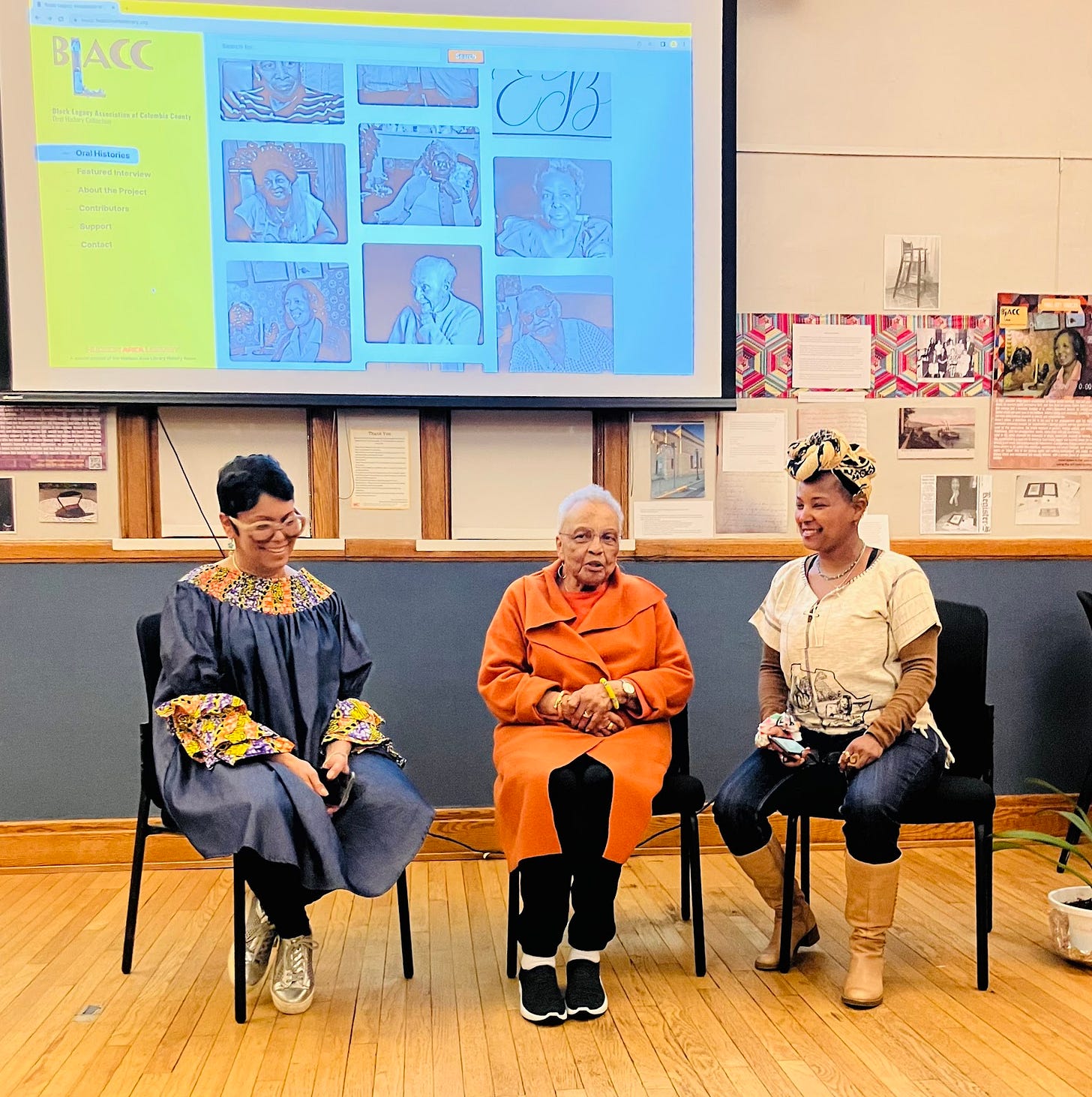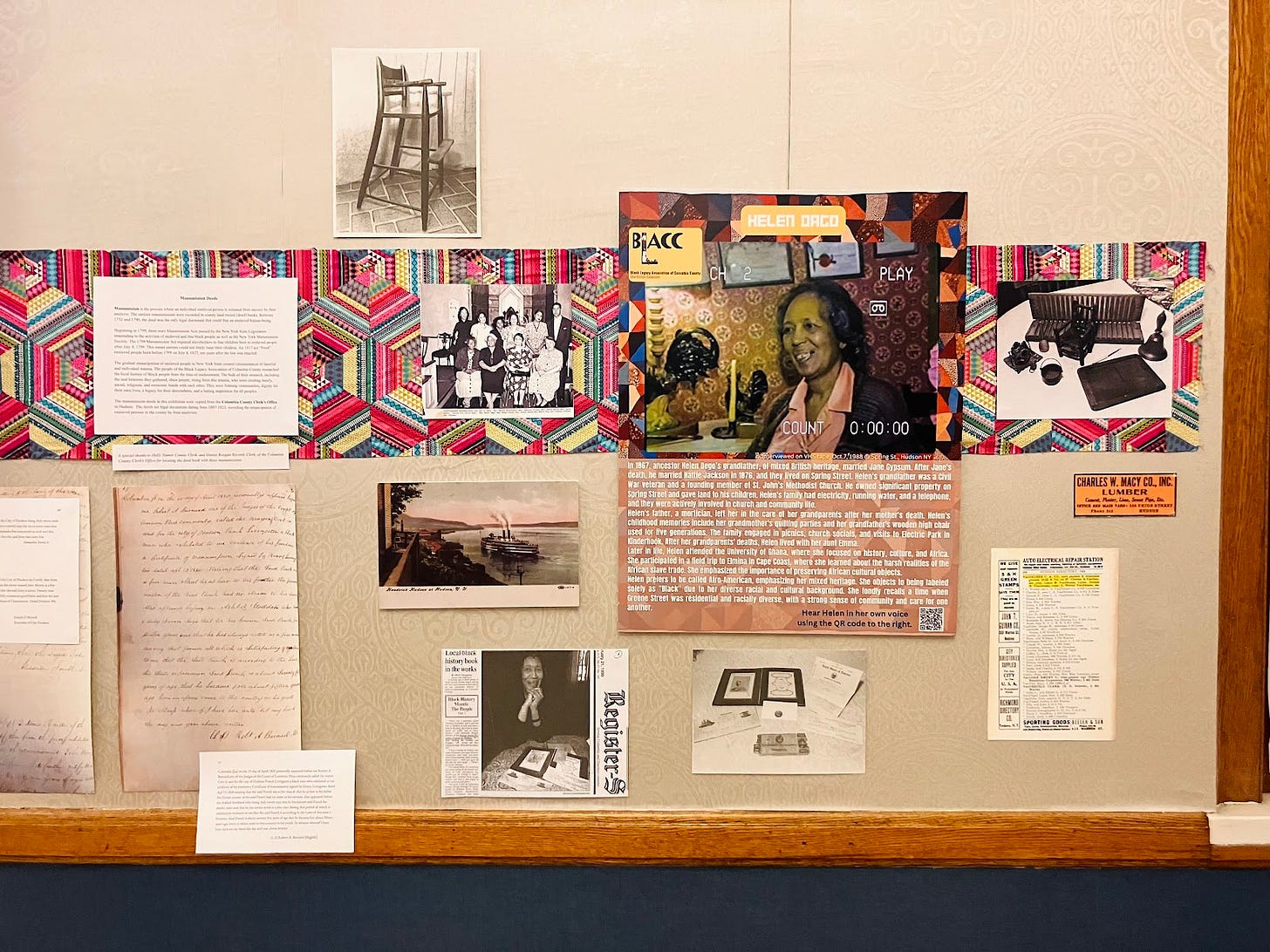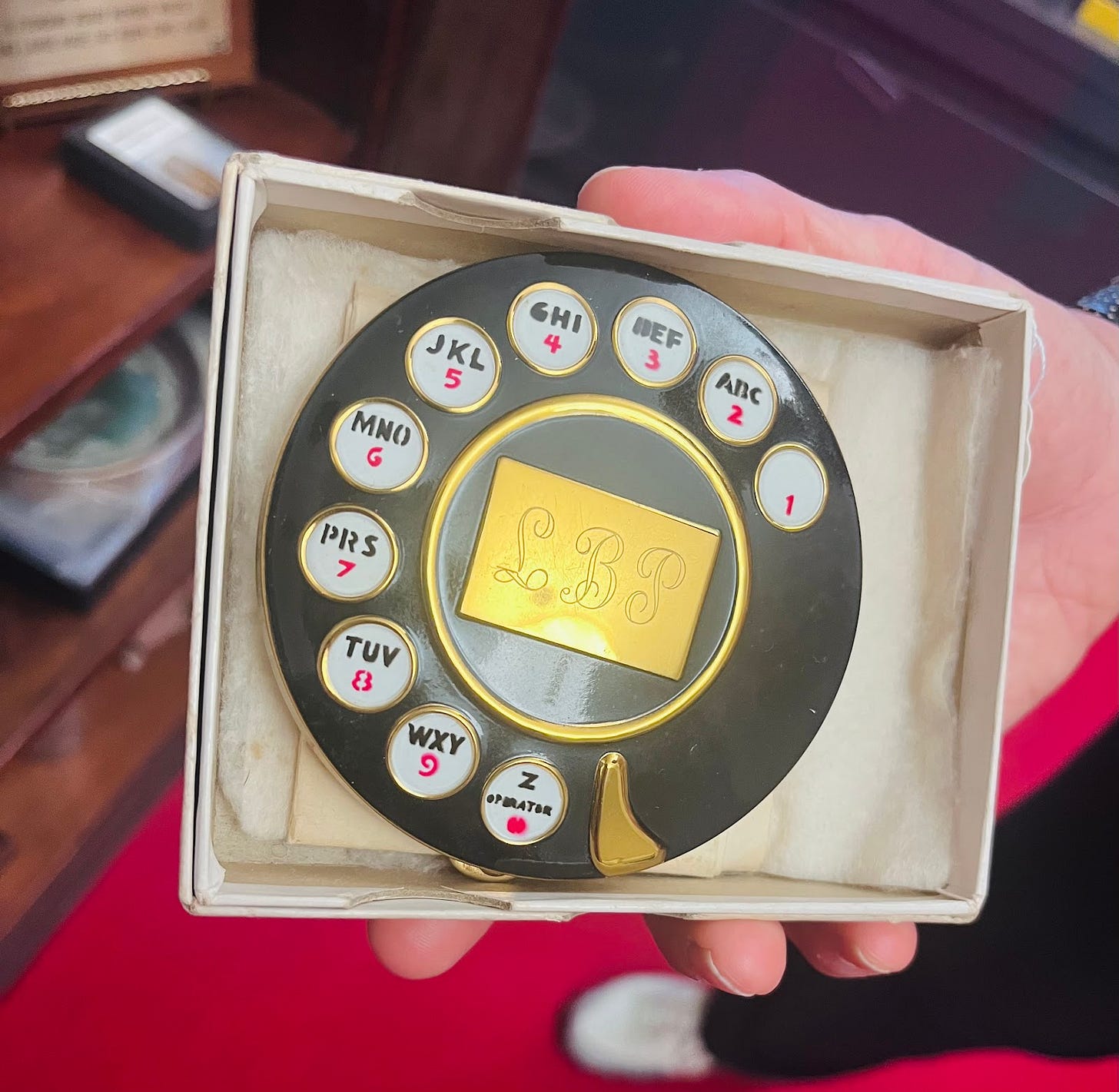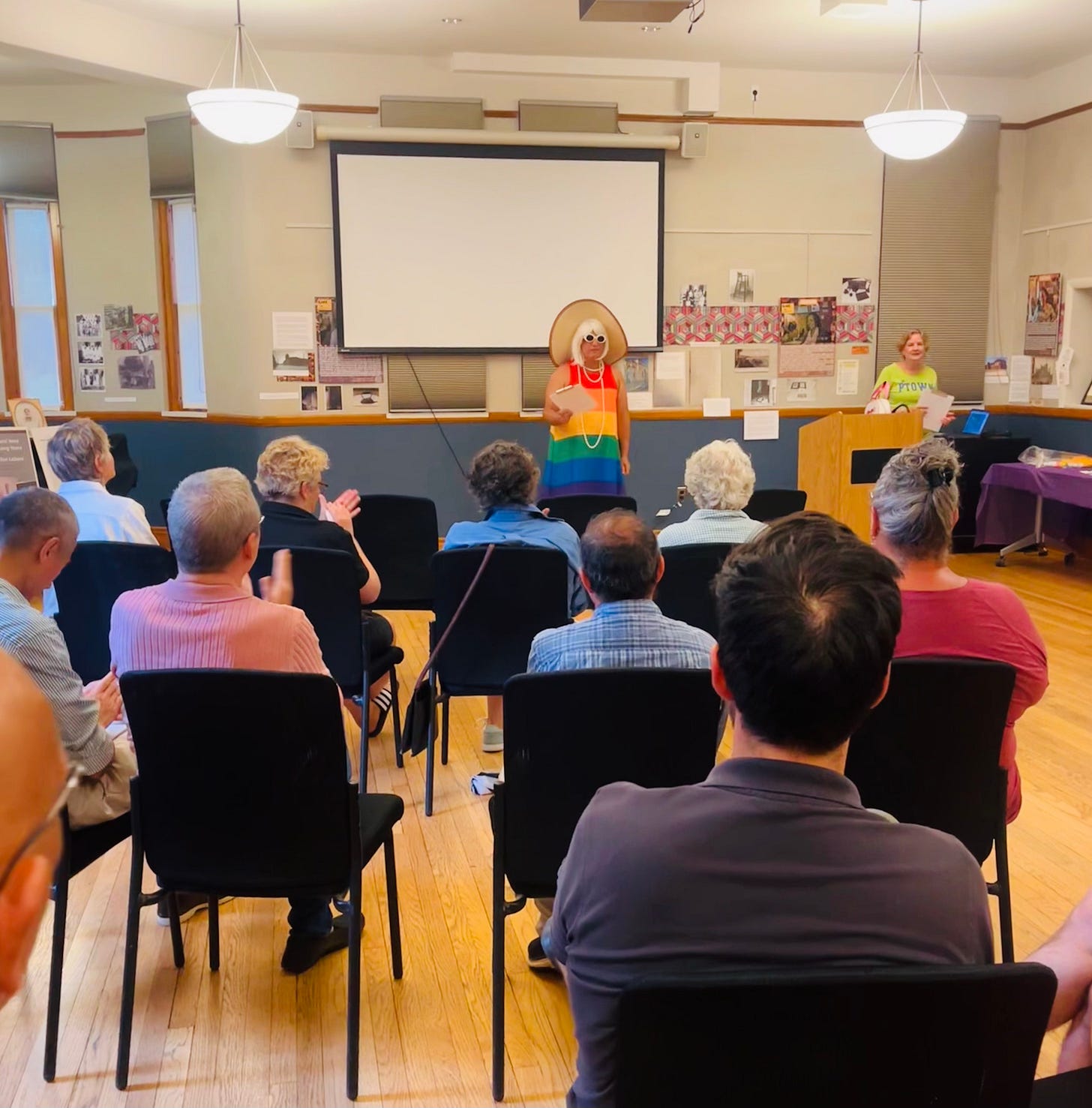The Past Lives Here: How the Hudson Area Library’s History Room Grounds a Changing City
Preserving what matters through memory, care, and community
On the main floor of the Hudson Area Library, in the back left corner, there’s a room where the city’s memory is kept. You’ll find shelves of documents, boxes of artifacts, photographs and videos, artwork, digitized recordings — and names.
Names printed in Hudson High School yearbooks and nursing school diplomas. Names scribbled on ration cards, typed on deeds, embroidered into garments. Names spoken aloud in oral histories, preserved in the voices of people who lived — and still live — in this city. Names with one thing in common: they’re all people connected to Hudson.
When people think of a library, they usually think of books. But the Hudson Area Library, like so many vital civic institutions, contains so much more. In addition to borrowing books, eBooks, AV equipment, and even gardening tools, residents can access high-speed Wi-Fi, get job support, find meeting space — and, uniquely, access the collective memory of our city. The History Room is an archive, yes, but it’s also a kind of shelter. A public space that remembers what people sometimes forget.
In Hudson, where economic inequality continues to deepen, the library serves as a great equalizer. And the History Room, in particular, plays a critical role in holding space for collective identity, especially for those whose stories have been excluded from more official narratives.
Brenda Shufelt, Coordinator of the History Room, has worked at the Hudson Area Library for a decade — first as Program Director, and now in her current role stewarding the library’s archives. Though she spent her career in education in Harlem, Brenda was born at Columbia Memorial Hospital and visited Hudson often as a child.
Brenda’s job isn’t to dictate what gets preserved. “I’m here to coordinate,” she said. “I rely on our volunteers and the community. I don’t know everything, and I’m not supposed to.” The room is kept alive by a group of passionate volunteers, many of whom have brought in their own stories, their own photos, and their own vision for how Hudson can hold itself in the past and future at once. She’s especially grateful to the members of the History Room Committee — and to Emily Chameides, the Library Director, Tracy Robinson, the Program Coordinator, and all of the Hudson Area Library staff, whose steady support makes this work possible.
The History Room is open to the public on Saturdays, 10am to 1pm and Wednesdays from 6 to 8pm and by appointment. Using its resources is free, though donations are gratefully accepted to help sustain this work. The team handles research requests — everything from firehouse rosters to school photos to the history of homes.
The History Room houses an impressive range of materials, including Hudson High yearbooks from 1912 to the present; Hudson city directories dating back to 1851; maps, letters, photographs, and ledgers; special collections from the CMH School of Nursing, Columbia County oral histories, LGBTQ+ residents, and more. A collection of artifacts includes garments, bottles, ration books, personal keepsakes, collectibles, and more.
There are also annual exhibits curated for public engagement. The current exhibit, Hudson: A History of Whaling & Maritime Commerce, explores Hudson’s early identity as a bustling port city. Though short-lived, the industry shaped Hudson’s layout, architecture, and early economy. Letters, maps, and sailors’ accounts offer a vivid glimpse into this chapter — including journeys that reached as far as Hawaii and West Africa.
A 2023 exhibit on urban renewal invited the community to revisit a complex chapter in Hudson’s History. In the 1970s, several blocks of houses deemed blighted were demolished. While intended as improvement, these changes deeply impacted long-time residents, especially working-class and Black families. After a treasure trove of records were donated to the History Room by Arthur Koweek’s family, the community gathered to celebrate and reflect on this time in Hudson.
During a program on the topic of this exhibit, I witnessed a conversation I still think about: a descendant of the man who led Hudson’s urban renewal efforts stood in dialogue with a descendant of a family whose home was torn down as a result. They didn’t agree on everything. But they spoke with deep respect and a shared commitment to understanding. “There was love and there was pain,” Brenda said of that evening. “It was one of the most beautiful civic exchanges I’ve ever seen.”
Another cornerstone History Room exhibit in 2024 was A Dialogue Across Generations: Connections Through the BLACC collection, curated by Tanya Jackson. This showcased the Black Legacy Association of Columbia County (BLACC) Oral History Project, a collection of interviews with African American elders conducted in the 1980s. Digitized and archived by the library, the exhibit featured these oral histories alongside photographs and documents, sharing the cultural, familial, and religious life of Black residents in Columbia County. Attending this exhibit filled a gap in my historical knowledge of Hudson’s history, and brought together a room full of people from all corners of our community.

This oral history collection is featured alongside an LGBTQ+ collection that is still in progress. An opening for this collection was held during Pride Month in 2024 where community members listened to a few testimonies together and heard from Hudson’s own Trixie Starr. There is another program June 12 at 6pm featuring clips of oral histories completed in the past year.
I have taken to listening to these voices from oral histories — both from the library’s archive and from the Community Library of Voice and Sound, an audio archive collected and stewarded by Oral History Summer School. I listen while walking around Hudson, sometimes on the very streets being described in the recordings. It’s given new meaning to old spots in our community, and it’s changed the way I move through the city. I highly recommend trying out this practice.

This is the kind of history that stays with you — not dry facts on a timeline, but something that stirs your body as much as your mind. One afternoon in the History Room, I held a 13-year-old boy’s ration card from World War II. I don’t know his story, not really. But I could feel something. I imagined him walking these same streets, navigating the same corners of town I do now, shaped by forces far beyond his control. That thin piece of paper — creased, yellowed, worn by time — collapsed the distance between us. It felt like reaching through the archive to hold his hand for just a second. That’s what this room can do. It doesn’t just tell you the past. It lets you feel it.
Brenda feels it too. She spoke of a pattern of uncovering something new from one person exactly when another person is longing to find it. One recent request led a volunteer to uncover a long-lost document from a local fire station just hours after someone had come in to donate it. “It’s uncanny,” Brenda said. “It’s happened more than a few times. The exact thing we’re looking for just… shows up.”
Brenda showed me a compact powder case from a telephone company luncheon in the 1950s — part of a batch of commemorative gifts given to women employees. “You can tell it was used,” she laughed. “Someone applied every bit of that makeup.” These objects aren’t just artifacts. They’re emotional portals.

When I asked Brenda what the History Room needs to thrive, her answer was simple: space, time, money, and more hands. “We’re growing fast,” she said. “And I love that — but we can’t do it all right now.”
She and members of the History Room Committee dream of a Hudson history museum one day — something with space for all these stories to breathe. But for now, she’s focused on stewarding what they have. That includes encouraging more people to donate — not just money, but memory. “If you’re cleaning out your grandmother’s house, don’t throw it all away,” she said. “You might have something that completes someone else’s story.”
In a city changing this fast, the History Room invites us to slow down. To reflect. To remember. It asks us to see each other more clearly — not just as neighbors, but as co-authors of the same story of Hudson.
What would Hudson feel like if every one of us spent a little time trying to understand someone else’s experience? One that’s different from ours, but just as real — just as rooted — in this place?
The History Room doesn’t preserve the past to hold us still. It offers memory as a kind of muscle — something we build, stretch, and return to, especially when the ground beneath us is shifting. To digitize a yearbook, to catalog a bottle, to record an aging voice — this is quiet, deliberate work. The labor of remembering. The labor of care.
The past lives here. Not to anchor us, but to show us how to move forward with more truth, more clarity, and more compassion.
If you have materials to share — or simply believe in the importance of preserving Hudson’s history — consider making a donation to support the History Room. Every contribution helps sustain this vital work.






